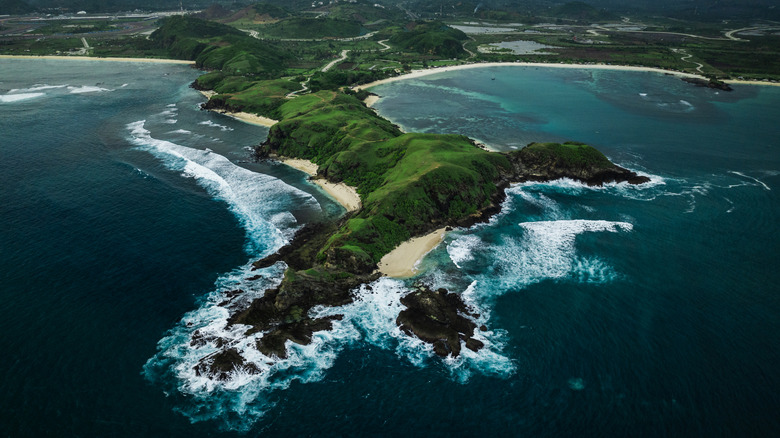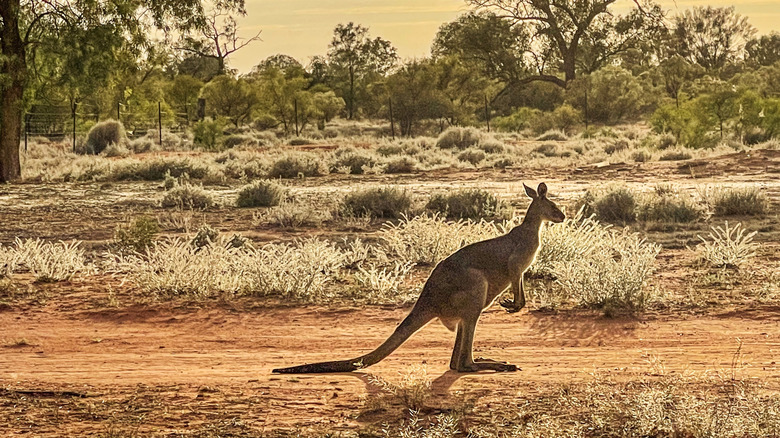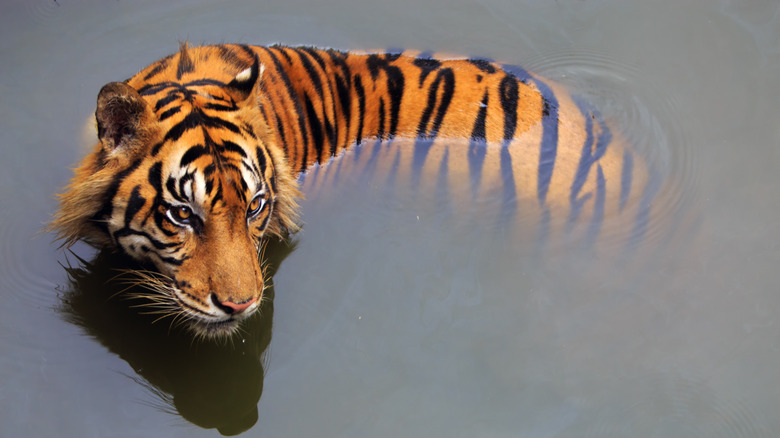The Massive 'Invisible Fence' Animals In Asia Refuse To Cross
Nature is shaped by boundaries, which is reflected in the unique biodiversity across the globe. This is evident in climate and landscape, with the freezing tundras of North America hosting vastly different flora and fauna than the hot deserts of Africa. Historically, the shifting of continents created land bridges that allowed many species to migrate from one landmass to another. However, one boundary that animals don't cross is known as the Wallace Line.
Stretching across Southeast Asia, the Wallace Line establishes a clear boundary — an "invisible fence," according to Earth.com — between the wildlife of Asia and Australia. Despite the shortest distance between the two landmasses being only 15 miles, from Bali to Lombok, even bird and fish species haven't made the journey. The Makassar Strait, which flows between the Indonesian islands of Borneo and Sulawesi, is the primary reason for this divide, as its deep waters and strong currents create a barrier that has always been present; no land bridge has ever existed in this location.
Interestingly, the Wallace Line isn't a landmark found on maps. Instead, it's a roughly crafted geographical divide named after naturalist Alfred Russel Wallace, who studied the biodiversity on both sides of this divide in the nineteenth century. However, it has become an established boundary for researching the differences in flora and fauna on either side and continues to play a crucial role in our understanding of the natural world.
The Wallace Line was integral in developing the theory of evolution
While we can now observe examples of evolution around us, even in the similarities between wolves and domestic dogs, the theory of evolution wasn't always so clear. Many people are already familiar with Charles Darwin and "On the Origin of Species," which proposed the concepts of natural selection and evolution. However, fewer are acquainted with Alfred Russel Wallace, who reached the same conclusion around the same time as Darwin. Despite Darwin's efforts to publish his work before Wallace, the two became contemporaries, exchanging information and research. Wallace's book, "The Malay Archipelago," published 10 years after "On the Origin of Species" in 1869, was dedicated to Darwin.
Wallace's work, particularly his examination of biodiversity along the Wallace Line, further established the theory of evolution. Unlike anywhere else in the world, there is limited crossover between species along the Wallace Line, with the crab-eating macaque being the only land animal present on both sides. Instead, within a short distance of each other, you find vastly different animals; for example, nowhere in Indonesia do kangaroos coexist with tigers, despite their geographical proximity. By studying a wide range of life on both sides of the Wallace Line and deducing that the various species evolved due to environmental factors, Wallace developed his theory of natural selection, which coincided with Darwin's observations.
The importance of the Wallace Line in modern conservation efforts
Conservation is more essential today than at any other time in human history. This harsh reality has been highlighted by recent findings, such as the tragic poisoning of the California's sea lions and the increase in attacks on sharks by the ocean's deadliest predator. The Wallace Line presents researchers with a unique opportunity to study the adaptability of various species in response to climate change. Here, scientists have determined how specific species respond to climate shifts and which are better able to adapt compared to others that face challenges. For example, the animal species on the Asian side of the line have fared better at adapting to warmer weather, which could help them in the long run. The same sadly can't be said for the species on the Australian side.
As climate change remains a significant concern for humanity, nature experiences its effects more acutely than we do. Changes observed along the Wallace Line can help us determine the future consequences of our actions on wildlife; it's one of the most critical areas in the world, even if it can't be explicitly found on a map.


